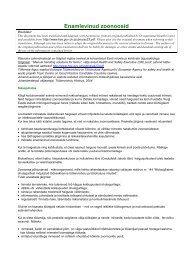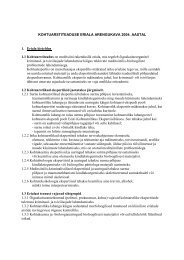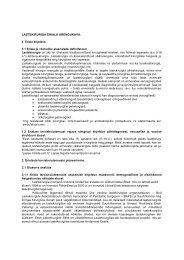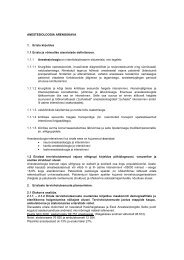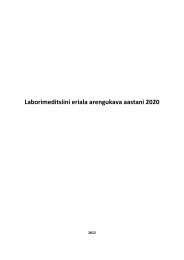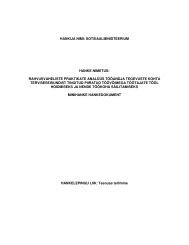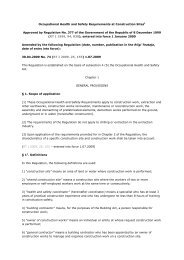SErIES IAEA HumAn HEAltH SErIES IAEA Hum
SErIES IAEA HumAn HEAltH SErIES IAEA Hum
SErIES IAEA HumAn HEAltH SErIES IAEA Hum
You also want an ePaper? Increase the reach of your titles
YUMPU automatically turns print PDFs into web optimized ePapers that Google loves.
(f)<br />
(g)<br />
Performance criteria for all the tests, ideally both remedial and suspension<br />
levels;<br />
The corrective actions necessary when the performance criteria are not met:<br />
—The type of corrective action,<br />
—The time-frame for corrective action,<br />
—Verification that corrective action has been effective.<br />
The records of QC test results and corrective actions taken should be readily<br />
available.<br />
5.1.3.4. Equipment replacement policy<br />
Equipment that is old, obsolete or poorly maintained may fail to give the<br />
required image quality for effective diagnosis, give excessive doses to patients or<br />
be dangerous as an electrical or mechanical hazard.<br />
Severely defective equipment must be put out of service. If only a limited<br />
number of components of the equipment are defective, the equipment may be<br />
allowed to operate in a limited capacity, provided that the overall performance of<br />
the equipment is not impaired. Equipment with minor defects may be used for a<br />
limited period until repair is possible, as long as its use does not significantly<br />
degrade image quality or create a significant hazard to patients or staff.<br />
A policy should exist for the timely repair and/or replacement of defective<br />
equipment.<br />
5.1.4. Optimization in clinical practice<br />
Optimization of image quality and patient dose is a dynamic process that<br />
aims to give sufficient diagnostic image quality with minimum doses to patients.<br />
Optimization involves inputs from the radiological medical practitioner,<br />
radiographer and medical physicist. The procedure used for examination<br />
optimization should be documented.<br />
While all imaging examinations should be optimized, the following require<br />
special attention:<br />
—Computed tomography examinations;<br />
—Screening programmes (e.g. mammography);<br />
—Interventional or procedural examinations;<br />
—Examinations involving infants or children;<br />
—Examinations involving pregnant patients;<br />
—Volunteers for research (if applicable).<br />
51




